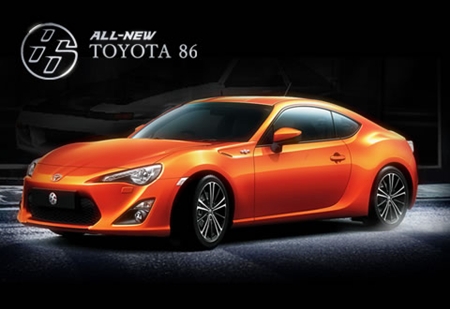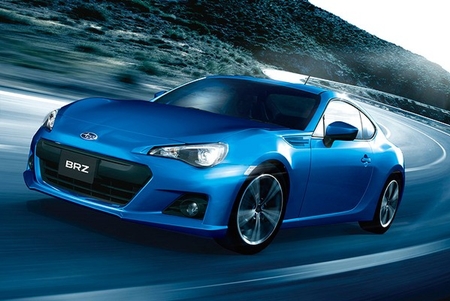The Toyota 86 is an interesting vehicle, using a Subaru two liter boxer engine and having a Subaru clone as well (something like the Ford Fiesta and Mazda2 “twins” here in Thailand). To add to the mix, the Toyota 86 and the Subaru BRZ are both built in a Subaru plant in Japan, again like the Auto Alliance plant here.
I have had contact with Ross Wilson in Japan, whose company Turboworld has been tasked with preparing the Toyota 86 for competition events in Japan. Ross has definitely given the Toyota 86 a great rap.
 Toyota 86
Toyota 86
According to Toyota, the 86 marks a return to Toyota’s sporting roots with the front-mounted, “boxer” petrol engine and rear-wheel drive. This powertrain format, combined with a compact design, light weight and a low center of gravity, produces the best possible power-to-weight ratio. These attributes, says Toyota, will reward 86 owners with maximum driving pleasure – lively, accessible performance and highly engaging dynamic abilities with minimal electronic intrusion.
The 86 is the result of a joint development between Toyota and Subaru, bringing together the best of each company’s technical know-how and their mutual passion for sports cars.
The stylish four-seater draws on Toyota’s sports-car heritage – including the Supra, MR2, Celica GT-Four and the legendary 2000GT – to create a strong emotional connection between driver and car.
 Subaru BRZ
Subaru BRZ
Toyota is offering the 86 in two versions – GT and GTS – both powered by the newly developed 2.0 liter flat four engine that revs freely to 7,450 rpm and with a high compression ratio of 12.5:1. Toyota’s D-4S direct-injection technology increases throttle response, power and torque over a wide range of engine speeds without sacrificing fuel efficiency and environmental performance. Maximum power of 147 kW – equivalent to 100 bhp per liter – and peak torque of 205 Nm ensure brisk performance. The flat-four engine combines with the lowest driver hip-point of any Toyota production vehicle, 400 mm, to give the 86 an ultra-low center of gravity of just 460 mm – in the league of cars such as the Porsche Cayman. Both the powertrain and driving position have been set as low and as far back as possible to optimize balance, giving the car a near-perfect 53:47 weight distribution. Fuel economy is remarkable for a sports car – 7.8 liters/100 km for manual variants – and even better for automatic versions at just 7.1 liters/100 km.
Comprehensive weight-saving measures, resulting in a kerb weight of just 1,222 kg, have contributed to handling and economy as well as a power-to-weight ratio of 120 kW/tonne.
The Toyota-designed six-speed manual gearbox offers quick, precise shifting through closely stacked ratios and a short-throw lever. A new Lexus IS-F-inspired six-speed automatic transmission, with shift paddles mounted on the steering wheel, combines direct response with an extremely fast shifting speed of only 0.2 seconds.
Power is distributed to the rear wheels via a Torsen limited-slip differential (except in auto GT), optimizing traction and grip under all driving conditions.
Standard equipment includes seven airbags, a five-mode stability control system, traction control, anti-skid brakes, 16-inch alloy wheels, cruise control, air-conditioning, CD sound system, daytime running lamps (DRLs) and a multi-information display.
The 86 GTS has 17 inch alloy wheels, a 6.1 inch display screen, satellite navigation with live traffic updates, auto-leveling HID headlamps, leather-accented front seats, dual-zone climate-control air-conditioning, aluminium pedals and LED DRLs.
No pricing yet for Thailand, but the Australian model 86 is in the showrooms down-under at just under $A30,000, making it a true bargain.




